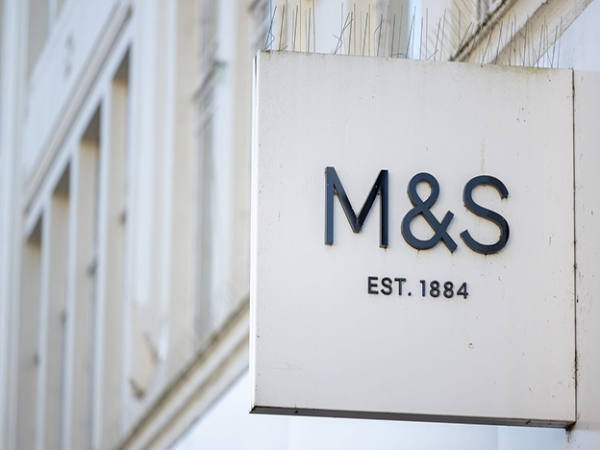- New series lookin at how to sport struggling stocks
- Balance sheets are key
- But high debt is not always a red flag
Our first article looked at ways to detect financial distress, and we looked at external factors and a group’s own profit-and-loss account. But as we concluded, it can be difficult to foresee problems in these places – more telling for a company’s financial condition are the balance sheet and the cash flow statement. These reveal a great deal more, plus there are far fewer places to hide. Profits are often nuanced numbers while cash is cash.
Getting a grip on the financial position does involve diving into often complex balance sheets and even more detailed ‘notes’. Notes, however, are where the real meat is to be found. However, it can be highly complex, more so if management seeks to disguise problems or takes unconventional routes to fix them.
As with trading, it is rarely one thing that fells a company. Nor is it helpful to look at measures in isolation or as a single snapshot – everything needs to be relative, either to previous trading periods or to the company’s peers.
Cash flow
Cash flow is the record of how trading performance moves you from one balance sheet to the next. It irons out any adjustments made to reported profits, such as goodwill amortisation, share-based payments, non-cash charges such as notional interest or other provisioning. For many analysts, this is the first port of call when looking at a company for the first time as the figures reported are cleaner.
This is important because a company can be ‘profitable’ but haemorrhaging cash or vice versa – making losses but generating cash. In the former case, a company might, for example, be imprudently recognising income from long-term contracts or accounting for ‘deferred income’ from products/services paid for upfront years earlier. In the reverse case, a business such as a housebuilder could be lossmaking but have stopped buying land and reducing working capital, meaning cash flows are resilient despite much lower sales figures.
The cash flow statement also often helps to understand better how various adjustments to profitability may be flattering the performance of the business.
Balance sheet ratios
For those preferring an analytical approach, there are various, well-established financial ratios that can be used to assess financial health. Here again, you need to look for changes in the ratios you calculate in preference to absolute levels as different business types have different capital structures, different operating profiles and individual ceilings on key balance sheet items. There are four main classes of ratio to consider:
Liquidity: Liquidity is the ability to bring in cash from trading or secure loans/equity in order to pay short-term liabilities – crudely, how quickly can you get your hands on your cash. The classic tests here are the ‘quick’ and ‘current’ ratios.
- Quick ratio: current assets – stock/inventory divided by current liabilities.
- Current ratio: all current assets divided by current liabilities.
If the ‘quick’ is less than 1 or moving down fast in that direction, be wary. The current ratio becomes a concern if it is heading down and towards 1.25. It is also worth checking whether cash on the balance sheet is in some way ‘reserved’ or in a ‘lock box’ tied to a specific purpose. If so, it has to be discounted in these calculations.
Solvency: This primarily looks at debt against equity or assets and questions whether debt can be paid off or refinanced. The main measure is debt-to-equity or ‘gearing’, although it is also common today to assess debt levels against earnings before interest, tax, depreciation and amortisation (Ebitda) – often known as ‘cash’ profit. While higher ratios here suggest more sensitivity to rising interest rates (market or company-specific), again absolute levels matter less than momentum. Solvency ratios are more about long-term stability while liquidity ratios look more at the immediate.
Efficiency: These show how effectively a company uses working capital to generate sales. They look at the likes of stock vs sales, amounts payable/receivable versus sales or sales made on long-term credit against total receivables. Again worsening trends say more than absolutes.
Profitability: I see these as less important because, as above, making a profit does not guarantee financial health. But as with the other ratios, if there are major and/or rapid changes in margins (primarily gross margins as highlighted in the previous article) or return-on-capital, this can indicate problems ahead.
Debt is not automatically an issue
Debt can easily be a false flag. Debt is just another form of capital, and some companies use more debt to fund operations and others use more equity capital. Look at a business such as National Grid (NG.) which has always had high debt and low equity but is not seen as being in financial difficulty. When interest rates are rising, higher debts will drag more on profits, but as long as a company is seen as able to replace debt when it expires (either with more debt or by issuing shares) there is usually no concern.
While having debt is not automatically an issue, rapidly rising debt can be. If there is a clear reason such as buying a business or funding expansion, that is fine, but rising debt in a broadly unchanging business does merit a closer look.
Debt is far less of an issue for UK companies due to scars from the global financial crisis, and both management teams and larger investors become far less inclined towards supporting debt as a primary source of capital. That said, debt can still cause a company to stumble.
Banking covenants
When banks (or market tradable debt issuers such as bond holders) make a debt advance they will draw various lines in the sand that, if crossed by the company, would constitute a default and could entail loans having to be repaid or a need for emergency refinancing. These lines are called ‘banking covenants’ and a failure is referred to as a ‘covenant breach’. Typical covenants might be: minimum net asset value (eg for real estate businesses), gearing ratios, balance sheet ratio tests (see above), interest cover (a trading rather than balance sheet issue) or a ceiling on capital expenditure.
Where a breach occurs, businesses may have to sell assets, issue heavily discounted shares, issue a high coupon bond or, in the worst cases, either undertake a debt-for-equity swap (the lenders get new equity at the expense of existing shareholders) or see the business put into administration. Covenant breaches are more common than one might expect. They are not always fatal, but understanding where the lines have been drawn is important: this is often buried in the notes to the accounts.
Expiry of debt
Typically, companies will publish a maturity profile of their debt. If the bulk is long dated, that is fine, but if a large amount falls due soon and the business is not trading well or it otherwise feels unlikely that equity could be issued as a bailout, then there could be problems. The worst-case scenario is where a business only has overdraft debt rather than structured loans – overdrafts are repayable on demand.
Qualified accounts
This is where the auditors feel there is an issue that third parties need to be aware of in the accounts, and means the figures as presented may not fit the bill of presenting a ‘true and fair view’ of the company. More likely, this is a disagreement over policy or accounting treatment, and is not usually fatal but can point to other problems. This will not be upfront in the results statements or accounts and will be only in the auditor’s letter in the preamble to the annual accounts. Always worth a check.
Trade terms
This can be a follow-on from working capital/liquidity concerns. If a business is having to pay its bills more quickly, it is likely to be a sign that its suppliers are losing faith in its ability to pay. At worst, they may be asking for invoices settled ‘in cash’ – ie, straight away. Normally, businesses will have 60 to 120 days to pay their invoices. This may be hard to detect and may involve a deep dive into either the accounts’ notes or even listening to company results calls or reading the transcripts.
It is also worth looking to see if there has been any loss of payment guarantees – this can be important for businesses using the likes of export guarantees for payment or credit risk insurance against customers not paying.
Pensions: The tail wagging the dog
In recent years companies have moved away en masse from significantly more demanding final-salary pension schemes, often via pension risk transfers. This is where defined-benefit pensions are migrated to a defined-contribution or money-purchase scheme. But final-salary schemes are still often found in older or long-established businesses.
The problems with final-salary schemes can be significant and companies have to assure the trustees of their pension schemes that they have either sufficient funds to meet future liabilities or have a scheme in place to achieve that. Many businesses have longstanding and substantial pension deficits, meaning the company cannot guarantee to meet its obligations. This can have major consequences. Pension trustees can demand large cash or asset top-ups, they can block dividend/buyback distributions or prevent major acquisitions being funded by demanding that pension fund shortfalls are addressed first.
In extreme cases, such as with Unigate (or Uniq as it became) in 2008, shareholders can lose almost everything. Uniq had a £1bn pension liability but had only about £600mn in assets and the company had a market capitalisation of £100mn going into the financial crisis – and as its market realised the scale of the pensions bill, its market cap fell to £6mn. Eventually, the pension fund was given a 90 per cent stake in the company, in effect a debt-for-equity swap with existing shareholders largely wiped out.
The likes of BT (BT.), Shell (SHEL), BP (BP.), Centrica (CNA), Royal Mail or International Consolidated Airlines (IAG) (thanks to British Airways) often have pension fund under-funding issues. Many large businesses have long-term obligations larger than their market capitalisation (ie BT has obligations of £59bn against a market cap of £13bn with a £1bn under-fund, although this is better than the £9bn gap five years ago) and a common problem is that there are many more pensioners (current or future) than there are current employees paying into the scheme.
Pension funding can swing violently as bond yields/discount rates change, life expectancies increase, stock markets rise or fall and bad investment decisions are made. This is something always worth a look and a figure can normally be found on the balance sheet with detailed allied notes, which should contain details of how any shortfalls will be rectified.
Cash burn
This is really only an issue for newer or start-up businesses often not yet making a profit. They use bank debt or equity to fund development and pay their costs: in effect, this is substantial negative cash flow and for this type of company is far more important than reported profits, which are likely to be heavily ‘adjusted’.
Investors need to take a view on how easy or difficult it will be to secure new funding once the existing resources are burned through. Inability to secure new cash to burn is the primary failure for start-up businesses.
As with trading, there is no magic light that can easily highlight problems; just hard work and monitoring how key measures change over time. But cash and the balance sheet are much more likely to expose problems. Next time we will look at some actual examples of businesses that foundered and what could have forewarned investors.










